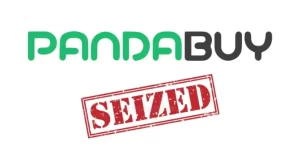Are you considering using Pandabuy for your next cross-border shopping spree? With its promise of simplifying purchases from major Chinese e-commerce platforms, Pandabuy has gained attention, especially among international shoppers. But with recent controversies and operational challenges, is it still the best choice? In this article, we’ll dive into what is Pandabuy , the issues it faces, and some great alternatives that might better suit your needs.
What is Pandabuy?
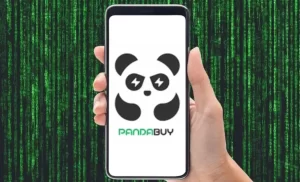
Pandabuy is a Chinese e-commerce shipping agent platform that specializes in providing shipping services for overseas users who want to purchase products from China. It is widely known for shipping counterfeit luxury goods, including branded clothing and high-priced shoes from companies like Nike.
The platform allows international users to shop on major Chinese e-commerce sites such as Tmall, Taobao, and JD.com, acting as an intermediary to simplify the purchasing process for these products.
Many users, including influencers, frequently showcase and promote counterfeit or replica items (often referred to as “reps”) purchased through Pandabuy on social media platforms like TikTok, Discord, and Reddit, often sharing their “unboxing haul.”
How Does Pandabuy Operate?
Pandabuy’s business model is primarily based on “reverse overseas shopping,” which helps international users purchase products from Chinese e-commerce platforms (such as Taobao, Tmall, and JD) at original prices, and generates profits by providing value-added services. The specific process works as follows:
Order Placement: International users browse and select their desired products on the Pandabuy platform, submitting purchase links or product information to create an order.
Platform Procurement: Pandabuy’s purchasing team buys the corresponding products from Chinese e-commerce platforms based on the user’s order.
Warehousing Service: Once the products are delivered to Pandabuy’s domestic warehouse, the platform provides free warehousing services. Users can choose to combine multiple orders to reduce international shipping costs.
Quality Inspection and Value-Added Services: Pandabuy offers value-added services such as product quality inspection and customized photography to ensure the quality of the products and meet users’ personalized needs.
International Logistics: Users choose the appropriate international shipping method, and Pandabuy is responsible for packaging and sending the products to the user’s country.
Payment and Settlement: The platform supports various international payment methods, allowing users to pay for the product cost, international shipping fees, and any potential value-added service charges.
What Happened to Pandabuy?
Is Pandabuy Back?
Pandabuy has not fully resumed operations. Due to recent investigations, most of its services, such as placing orders and processing payments, are temporarily suspended. Users can still browse products but cannot make purchases.
The suspension is linked to issues involving counterfeit goods and regulatory violations. While the platform may restart under a new entity, no clear timeline for resumption has been provided, leaving its future uncertain.
Alternative options to Pandabuy
-300x239.webp)
The question “Is Pandabuy back?” is still up in the air, but that doesn’t mean we can’t check out other great platforms. Instead of waiting and wondering, why not take this chance to explore some reliable cross-border shopping and dropshipping options that offer convenient services and plenty of products?
If you’re looking for alternatives to Pandabuy, here are a few great platforms to try:
1. CJ Dropshipping
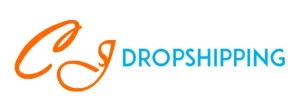
Pros:
● Offers a one-stop service, including sourcing, warehousing, packaging, and shipping.
● Wide range of flexible product categories across multiple industries.
● Supports global shipping with broad coverage.
● Seamless integration with Shopify, WooCommerce, and other platforms.
● Provides branding customization services (e.g., packaging and product labeling).
Cons:
● Shipping times can vary greatly depending on the destination.
● Best suited for bulk orders; fees for small orders can be higher.
● The interface and operations may require some time to learn.

2. Oberlo (via Shopify)

Pros:
● Designed specifically for Shopify, making integration easy and user-friendly.
● Wide supplier network covering global markets.
● Automates product imports and order processing, saving time.
● Simple to use, ideal for beginner sellers.
Cons:
● Only works with Shopify; not compatible with other platforms.
● Heavily reliant on AliExpress suppliers, which may have inconsistent quality.
● Long shipping times can lead to extended customer wait times.
● Combined with Shopify’s monthly fees, overall costs can add up.
3. AliDropship
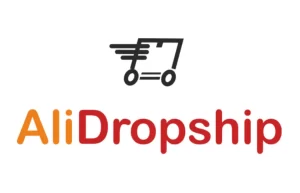
Pros:
● Extensive product range from AliExpress suppliers.
● One-time payment, no monthly fees, suitable for budget-conscious sellers.
● Offers automated order management features.
● Supports self-hosted e-commerce websites, giving sellers full control.
● Provides additional services like website development and marketing support.
Cons:
● AliExpress products often vary in quality, requiring careful supplier selection.
● Shipping times can be long, impacting customer satisfaction.

4. Spocket
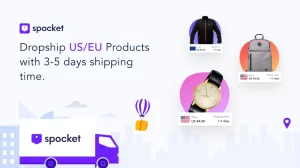
Pros:
● Features suppliers from around the world, focusing on US and European suppliers.
● Faster shipping times compared to platforms relying on Asian suppliers.
● High-quality product selection, often curated.
● Seamless integration with Shopify, WooCommerce, and other platforms.
Cons:
● Limited product categories compared to other platforms like CJ Dropshipping or AliExpress.
● Higher product costs, particularly for premium items.
●Shipping costs may vary significantly based on supplier location.

5. DropSure

Pros:
● Offers global shopping and dropshipping services.
● Helps sellers source products from China and ship them worldwide.
● Flexible solutions for product selection, logistics, and automation.
● Suitable for scaling cross-border e-commerce businesses.
Cons:
● Still growing as a platform; supplier and product variety may not be as extensive as larger platforms.
● Limited integrations compared to platforms like CJ Dropshipping or Spocket.
● May require sellers to handle additional logistics coordination.

Pandabuy once stood out as a convenient gateway to Chinese products for global shoppers, but its current operational uncertainties make it less reliable. While the platform may return in the future, exploring alternatives ensures you can still access what you need without unnecessary delays or risks. Whether you’re looking for seamless logistics, better pricing, or secure transactions, there are plenty of other options to consider. Ultimately, the right choice depends on your priorities—but staying informed is always the first step.


 7 min read
7 min read